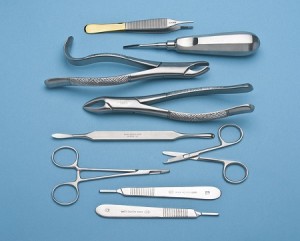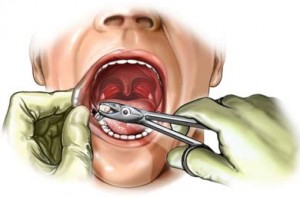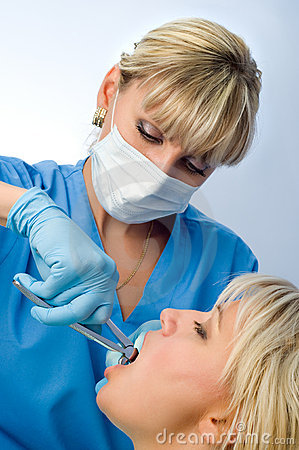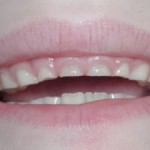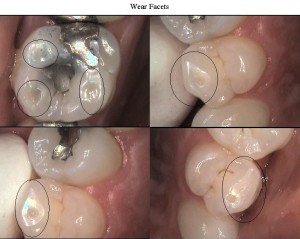Your dentist referred you to an endodontist for a root canal treatment that he/she finds difficult to do. However you started having the jitters about your endodontic appointment since this is a specialist you are seeking. This article will give you a gist on what happens at an appointment with an endodontist. Continue reading
Tag Archives: root canal treatment
Cheek swelling
Cheek pain, at times, tends to be like one of those unwanted guests who arrive without warning, suggest meekly that they’ll be staying only for a couple of days, overstay, and throughout the entire episode, cause immense trouble and discomfort. Cheek pain causes can range from the medically-driven to the hormone-driven (the latter I will illustrate towards the end of this article). Regarding the former, here are some of the possible reasons for cheek pain and swelling. Continue reading
Inferior alveolar nerve Part 2
- for determining the location of the inferior alveolar nerve in all three dimensions of the mandible (lower jaw). With the software that is available to the dentist, the radiographic information from this study can be used to manipulate the jaw in 360° and provide the most accurate information to the dentist for treatment planning for the placement of the implant or for a third molar extraction. When screening radiographs demonstrate the increased risks for implant placement or third molar extraction, it is below the standard of care for the dentist or oral surgeon to fail to explain the
advantages of the CT or CBCT as a diagnostic option to the patient before the patient is subjected to the increased risk of nerve injury. Continue reading
Basics of Tooth Extraction Part 2
Continued from Part 1.
Instruments used in dental extractions
As with any other dental procedures, teeth extraction required specific dental instruments to do so. Tooth extraction forceps and elevators are the basic instruments used to extract teeth and they come in numerous shapes and sizes. Most forceps come with a primary or baby tooth equivalent. Continue reading
Basics of Tooth Extraction Part 1
Perhaps the most affordable option for dealing with a severely damaged or infected tooth is dental tooth extraction. Tooth extraction (also known as exodontias) is the removal of tooth from the mouth. The majority of the public tend to visit their dentist for a tooth extraction more often than any other dental procedures. Extraction of teeth is done for a variety of reasons, as of the following: Continue reading
Pros & Cons of Tooth Extractions
When faced with an aching tooth, the first thing that comes to mind is to pull the miserable tooth out. However depending on the cause of the toothache, tooth extraction is not the only way out of the pain. There are many causes of toothache and there is a chance that the aching tooth could be saved. Continue reading
How to Treat Tooth Decay
Treatment for tooth decay varies according to how severe the decay is.
- Brushing and flossing with fluoride toothpaste and/or receiving fluoride treatments may be enough to reverse early decay, before cavities have formed.
- You need a filling if a cavity has formed. A filling is a material that plugs the cavity hole and restores a tooth to its original shape after your dentist has removed the decay. Continue reading
How to Root Canal a Baby Teeth
The purpose of root canal treatment with baby teeth is to keep the teeth in function until exfoliation, or at least for as long as they are important for occlusal development. Besides eating and speaking, many parents do not know that baby teeth (or primary teeth) also act as a guide for the underlying permanent teeth to erupt and at the same time they maintain the space on the arch so that the permanent teeth has enough room to grow when it is out. Continue reading
Top 5 Children Habits You Need to Know About (Part 2)
4. Bruxism
It is a habitual grinding of teeth when the child is not chewing or swallowing. It is divided into Daytime Bruxism (Diurnal) or Night -time Bruxism (Nocturnal). Daytime Bruxism can be conscious or subsconscious grinding along with parafunctional habits and it is usually silent. On the other hand, Night-time Bruxism is categorized as subconscious grinding in a rhythmic pattern. Bruxism happens as a result of faulty fillings, improper teeth occlusion, genetic causes, neurological disturbances, occupational factors, over anxious or stressed children.
Â
What do you notice?
From the tooth surfaces, you will observe your child’s teeth are very much worn off. This feature is called atypical wear facet, whereby the worn area are shiny, uneven with sharp edges on the upper and lower front teeth. Fillings may fracture or tooth may chip off as a result of grinding. Teeth will become mobile and very sensitive to cold and hot food. Besides that, your child may complain of muscular tenderness and fatigue around the cheek on rising in the morning. Jaw movements restricted and difficult in opening mouth for a long time.
   Â
Continue reading
Success Rate and Outcomes of Root Canal Therapy
 Every stakeholder in dental delivery system has different definitions and expectations regarding the outcome and result of root canal treatment. As a patient, you might be concerned about the function and esthetic of the endodontically treated tooth where as your dentist will judge the outcome of a root canal treatment based on the results of clinical and radiographic examinations. Continue reading
Every stakeholder in dental delivery system has different definitions and expectations regarding the outcome and result of root canal treatment. As a patient, you might be concerned about the function and esthetic of the endodontically treated tooth where as your dentist will judge the outcome of a root canal treatment based on the results of clinical and radiographic examinations. Continue reading

